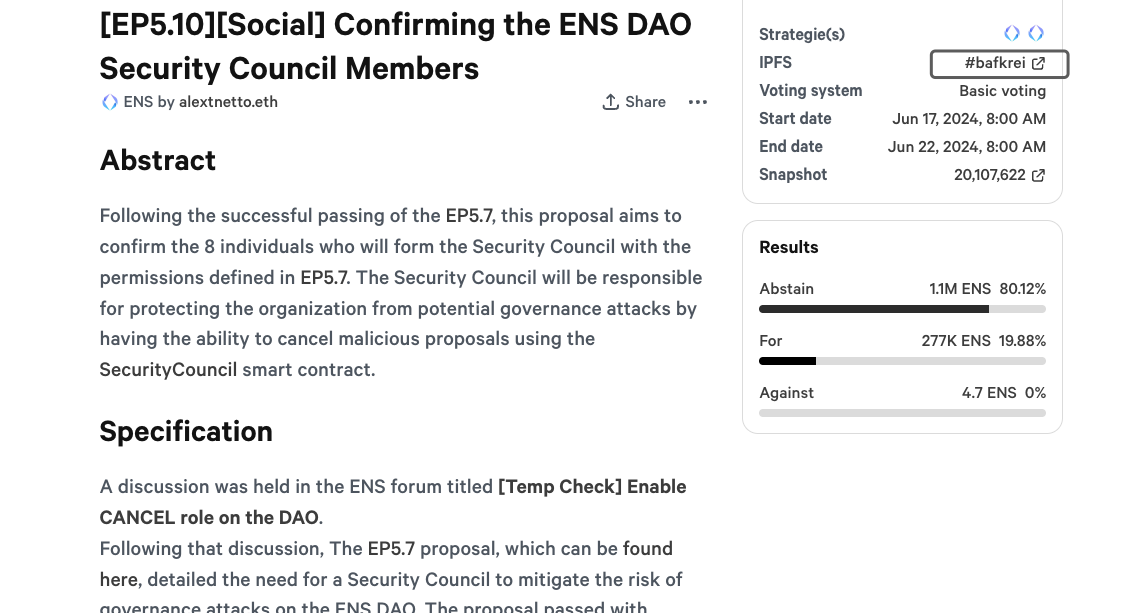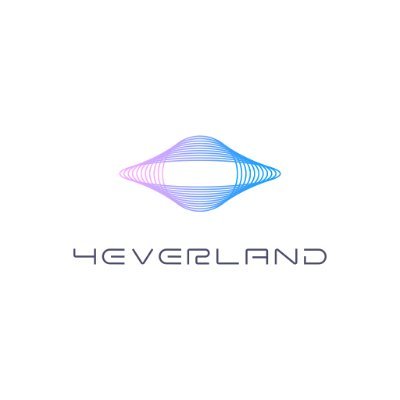Overview
In the evolving blockchain ecosystem, decentralized governance plays a vital role in democratizing the decision-making process for DAOs, DeFi protocols, and NFT communities. The open-source voting platform " Snapshot " has become an important tool for these communities, enabling users or community members to seamlessly vote without incurring gas fees to decide community development. In the subsequent sections of this article, we will delve into the implementation principles and workings of Snapshot, and examine the important role that 4 EVERLAND plays in ensuring verifiable off-chain data storage.
What is a Snapshot?
Snapshot is a revolutionary voting platform designed to simplify the decision-making process for DAOs, DeFi protocols, and NFT communities. Without Snapshot, each organization or community would need to design a voting solution specifically for their use case. Snapshot enables organizations to leverage a customizable solution with minimal effort required for setup. It allows for a highly customized voting process to meet the varying needs of different users and organizations. This customization covers all aspects, including the calculation of user voting power, the choice of voting mechanism, proposal submission, and vote verification.
Snapshot is unique in that it leverages IPFS to store proposals and user votes, and employs a technique known as "off-chain" voting. In this approach, proof of user votes is stored in the form of cryptographic signatures on IPFS rather than on the blockchain, ensuring that voters do not have to pay gas fees for transactions.
Essentially, Snapshot is an off-chain, gas-free, multi-governance client. The result is both easy and challenging to verify, a reliable tool for blockchain-based governance.
How Snapshot works
Snapshot's voting mechanism revolves around three core elements: Spaces, Proposals, and Votes. Spaces are profiles or accounts of an organization. Proposals and votes are associated with these Spaces. To create a Space on Snapshot, a user needs an ENS domain name, which is the only requirement for establishing a Space. This name serves as a Space identifier, allowing users to access their page on Snapshot, such as https://snapshot.org/#/ens.eth , where "ens.eth" represents the ENS name of the Space.
Within a space, users can generate proposals and vote on them. Space administrators can flexibly define proposal creation and voting rules by setting specific voting and validation strategies. For example, only users holding at least 10,000 of a specified token can create a new proposal, and a user's voting power can be proportional to the balance of a specified token in their wallet. You can find more information about different solutions in the Snapshot documentation .
vote
Once a space is created, voting is done via proposals. Proposals outline the voting question and include a voting system that determines the options voters can choose from and how the results are calculated. Crucially, each proposal includes a snapshot block number that points to an Ethereum (or any other supported blockchain) block number. The block number serves as a snapshot of the voter's balance, preventing manipulation through temporary token accumulation after a proposal is made. This is why the platform is called snapshot.
Result calculation
The result of a proposal is calculated based on the selected voting system. Each proposal uses one of the following voting systems:
Single Choice
Approval voting, voters can select multiple options
Weighted Voting
These voting systems are used to calculate votes based on voting power. For example, the latest proposal in the ENS space : establishing the ENS DAO Council members .
The social proposal seeks to confirm a full list of 8 Security Council members. The vote will be a simple up/down/abstain vote on the entire list. If the proposal is successful, a separate executable proposal will be made to deploy the Security Council smart contract and assign the necessary roles.
Snapshot How to use 4 EVERLAND
Snapshot is a protocol that integrates various services to provide users with a seamless experience. All repositories are open source and anyone can view and audit them at https://github.com/snapshot-labs . Each space, proposal, vote, and user action is added to the 4 EVERLAND Bucket and comes with an IPFS content identifier (CID) .
The following wireframe outlines the architecture of the platform leveraging 4 EVERLAND:
The Snapshot infrastructure design mainly consists of three layers:
User-facing: UI applications
Logic: The backend server coordinates the work of multiple services
Data: IPFS/Arweave storage solution, saving information off-chain
IPFS pinning and Arweave backup service using 4 Everland Buckets
The most critical design aspect is its data storage solution, and this is where 4 EVERLAND comes into play:
Snapshot chose to use decentralized storage to replace expensive on-chain storage solutions. IPFS or Arweave can meet this need from all angles: ensuring transparency and gas-free voting, allowing anyone to view, audit and copy data, and freely participate in DAO governance.
Snapshot developed a microservice called Pineapple and a corresponding JavaScript library pineapple.js to simplify the process of persisting data to IPFS. The combination of the two ensures that data is pinned as quickly as possible. Since the service supports the AWS S3 API, it allows JSON objects to be uploaded to the 4 EVERLAND Bucket. The Bucket will quickly respond to these JSON objects, quickly execute the pinning service, bind the data, and upload it to Arweave for permanent backup, and then return the corresponding IPFS CID and Arweave hash. You can see some of these services here .
Open access through 4 EVERLAND dedicated gateway
After adding data to the IPFS network through the 4 EVERLAND Bucket, users can access this data through the 4 EVERLAND private gateway. You can see the integration of proposal signatures and voting information in the example below:

4 Advantages of Everland Storage
It is no coincidence that the Snapshot team chose 4 EVERLAND as their storage provider. In addition, 4 EVERLAND has several clear advantages:
No complex development required: 4 EVERLAND is compatible with AWS S 3 API, allowing for quick and easy integration without complex development work.
Unified API for multiple storage protocols: Through a unified API, 4 EVERLAND supports simultaneous storage on IPFS and Arweave, providing the flexibility to seamlessly use multiple decentralized storage protocols.
High storage efficiency and low latency: 4 EVERLAND has high storage efficiency and low latency, with an average response time of less than 100 ms. According to Pineapple's data feedback, compared with other storage services, 4 EVERLAND ranks first 99.99% of the time.
The combined advantages of IPFS and Arweave: It leverages the content addressing features of IPFS and the permanent storage features of Arweave to ensure the integrity and long-term preservation of data.
More: Strong security measures, scalability, intuitive user interface, and more.
Future Outlook
As blockchain technology continues to develop, the collaboration between 4 EVERLAND and Snapshot represents real progress in decentralized governance and storage solutions. This collaboration has demonstrated the potential for more secure, efficient, and scalable applications within the blockchain space.
Looking ahead, as 4 EVERLAND continues to expand support for additional storage protocols, it will further enhance Snapshot’s ability to reliably store all data across multiple decentralized storage solutions. This increased flexibility will greatly enhance Snapshot’s scalability, ensuring it can meet the growing needs of the decentralized community.
About 4 EVERLAND
4 EVERLAND is a Web3 cloud computing platform with storage, computing, and networking as its core capabilities. It integrates various types of DePINs and aims to create a distributed, efficient, self-motivated, low-cost, user-friendly one-stop developer platform to help the Internet seamlessly transition from Web2.0 to Web3.0 and provide infrastructure for millions of Web3.0 developers and applications.
Twitter | Telegram | Discord | Reddit | Medium | Email



